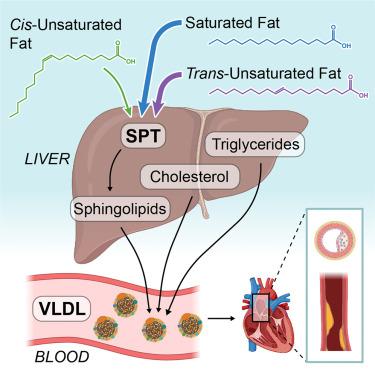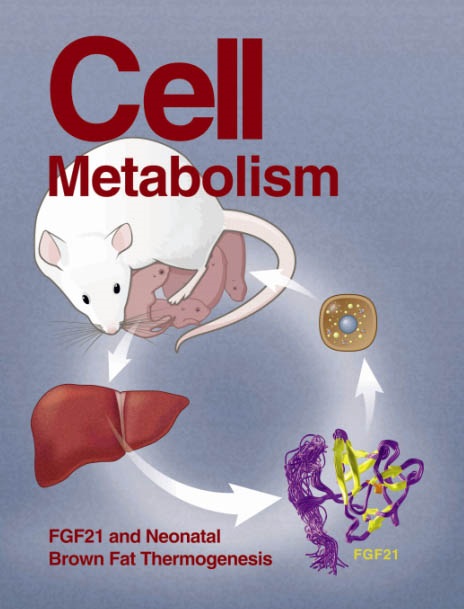Altered sphingolipid biosynthetic flux and lipoprotein trafficking contribute to trans-fat-induced atherosclerosis
IF 27.7
1区 生物学
Q1 CELL BIOLOGY
引用次数: 0
Abstract
Dietary fat drives the pathogenesis of atherosclerotic cardiovascular disease (ASCVD), particularly through circulating cholesterol and triglyceride-rich lipoprotein remnants. Industrially produced trans-unsaturated fatty acids (TFAs) incorporated into food supplies significantly promote ASCVD. However, the molecular trafficking of TFAs responsible for this association is not well understood. Here, we demonstrate that TFAs are preferentially incorporated into sphingolipids by serine palmitoyltransferase (SPT) and secreted from cells in vitro. Administering high-fat diets (HFDs) enriched in TFAs to Ldlr−/− mice accelerated hepatic very-low-density lipoprotein (VLDL) and sphingolipid secretion into circulation to promote atherogenesis compared with a cis-unsaturated fatty acid (CFA)-enriched HFD. SPT inhibition mitigated these phenotypes and reduced circulating atherogenic VLDL enriched in TFA-derived polyunsaturated sphingomyelin. Transcriptional analysis of human liver revealed distinct regulation of SPTLC2 versus SPTLC3 subunit expression, consistent with human genetic correlations in ASCVD, further establishing sphingolipid metabolism as a critical node mediating the progression of ASCVD in response to specific dietary fats.

鞘脂生物合成通量和脂蛋白运输的改变是反式脂肪诱发动脉粥样硬化的原因之一
膳食脂肪是动脉粥样硬化性心血管疾病(ASCVD)的致病因素,特别是通过循环胆固醇和富含甘油三酯的脂蛋白残渣。工业生产的反式不饱和脂肪酸(TFAs)被纳入食品供应中,大大促进了动脉粥样硬化性心血管疾病的发生。然而,造成这种关联的反式不饱和脂肪酸的分子贩运还不十分清楚。在这里,我们证明了反式脂肪酸通过丝氨酸棕榈酰转移酶(SPT)优先结合到鞘磷脂中,并在体外从细胞中分泌出来。与富含顺式不饱和脂肪酸(CFA)的高脂膳食相比,给Ldlr-/-小鼠喂食富含反式脂肪酸的高脂膳食(HFD)会加速肝脏极低密度脂蛋白(VLDL)和鞘脂分泌到血液循环中,从而促进动脉粥样硬化。抑制 SPT 可减轻这些表型,并减少循环中富含反式脂肪酸衍生的多不饱和鞘磷脂的致动脉粥样硬化 VLDL。对人类肝脏的转录分析表明,SPTLC2 和 SPTLC3 亚基的表达有不同的调控,这与 ASCVD 的人类遗传相关性一致,进一步确定了鞘磷脂代谢是介导 ASCVD 在特定膳食脂肪作用下发展的关键节点。
本文章由计算机程序翻译,如有差异,请以英文原文为准。
求助全文
约1分钟内获得全文
求助全文
来源期刊

Cell metabolism
生物-内分泌学与代谢
CiteScore
48.60
自引率
1.40%
发文量
173
审稿时长
2.5 months
期刊介绍:
Cell Metabolism is a top research journal established in 2005 that focuses on publishing original and impactful papers in the field of metabolic research.It covers a wide range of topics including diabetes, obesity, cardiovascular biology, aging and stress responses, circadian biology, and many others.
Cell Metabolism aims to contribute to the advancement of metabolic research by providing a platform for the publication and dissemination of high-quality research and thought-provoking articles.
 求助内容:
求助内容: 应助结果提醒方式:
应助结果提醒方式:


